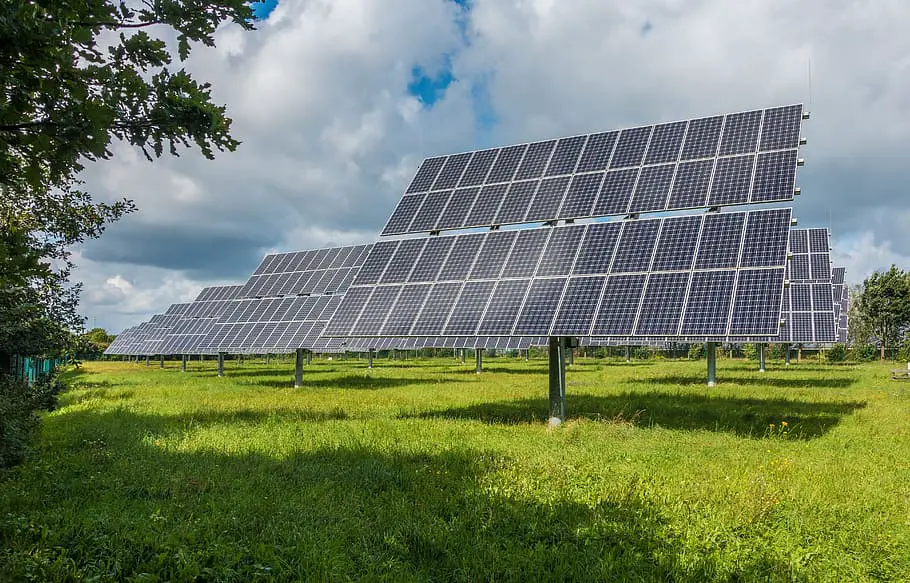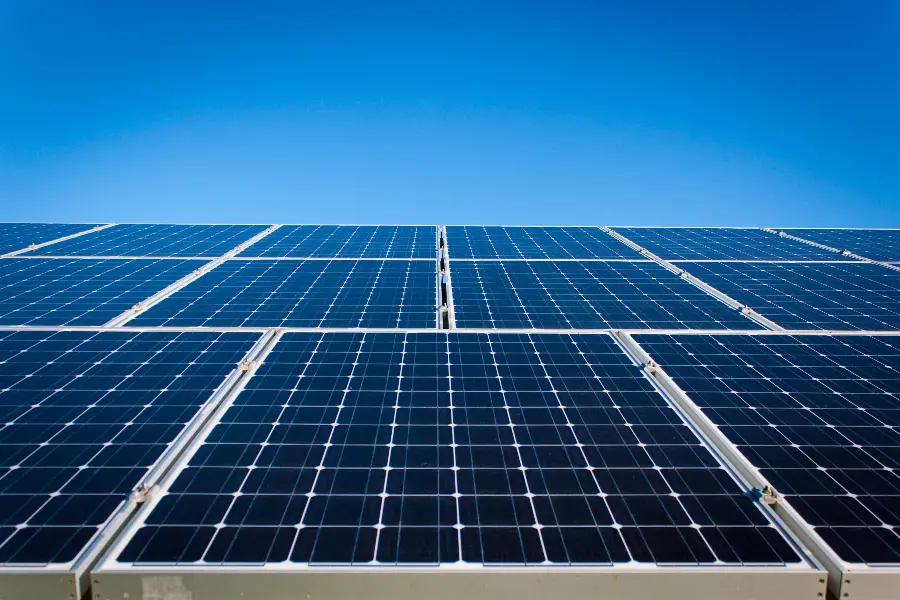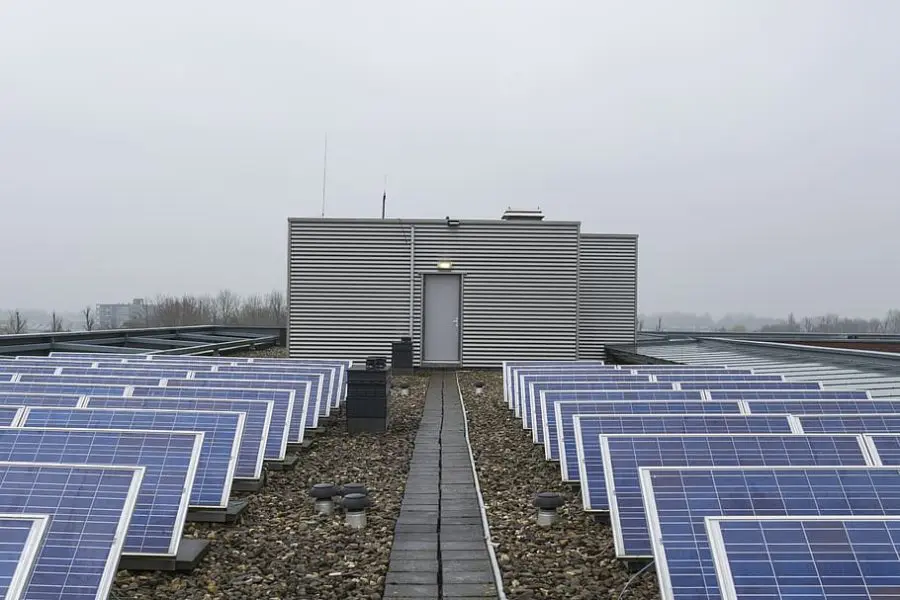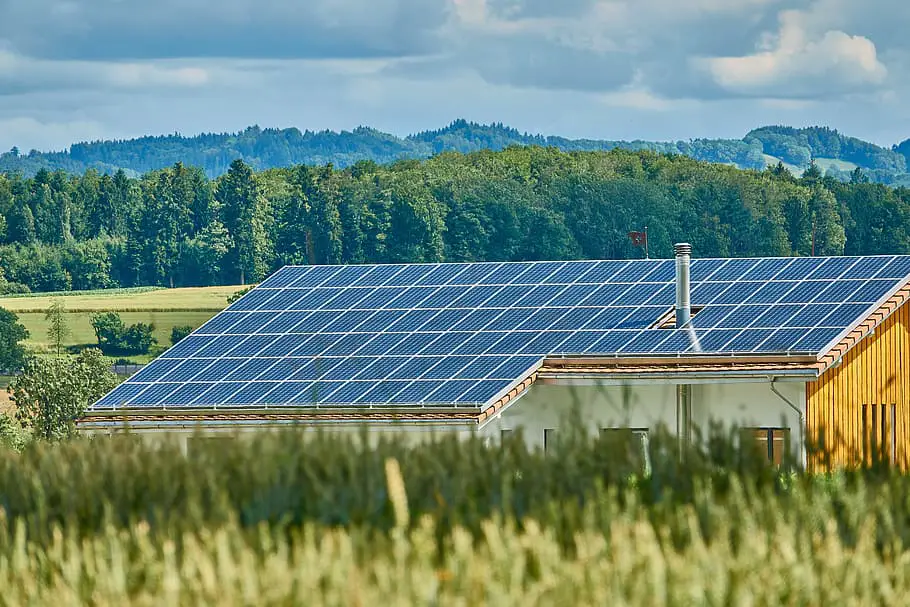
How does solar power help the environment? Learn about solar energy’s role in fighting climate change and the benefits of this clean, renewable energy source.
Have you been wondering about how solar power helps the environment?
Well, it’s a brilliant question! As we seek ways to live more sustainably, solar power is shining brightly on the horizon.
This sun-fueled energy source is transforming our relationship with the planet, reducing greenhouse gas emissions, and helping us conserve our precious resources.
And it’s not just about keeping the lights on, my friend. The environmental benefits of solar power are more profound and far-reaching than you might think.
So, let’s dive in and explore this together!
How Does Solar Power Help The Environment?
How does solar power help the environment? It’s a pretty important question to ask in our current era, especially as we grapple with issues like climate change and the ongoing quest for sustainable living.
In this post, we’ll journey together through the world of solar energy.
From the inner workings of photovoltaic systems to the positive impact on wildlife and habitats, we’ll cover it all.
We’ll also delve into the economic and social perks of solar power, not forgetting the challenges and innovative solutions coming our way.
There’s so much to learn and explore, so buckle up and let’s get started on this enlightening adventure!
Brief Overview of Solar Power and Its Increasing Popularity
Let’s start our journey with a little crash course on solar power, shall we?
In the simplest terms, solar power is energy that comes from the sun. The sunshine that graces our planet isn’t just for beach days and picnics; it’s a potent source of renewable energy.
As we collect and convert this sunlight into electricity, we get solar power. And folks, it’s not just a trend, it’s on a swift rise to stardom in the energy world.
Across the globe, more and more people are embracing solar power.
Just take a look around, and you’ll see solar panels popping up everywhere, from homes to businesses to even some of the most remote corners of the world.
And why not? It’s abundant, it’s efficient, and best of all, it’s clean.
The sun is not going anywhere anytime soon, and harnessing its energy is an opportunity we can’t afford to ignore.
Importance of Renewable Energy Sources in the Context of Environmental Sustainability
Now that we’ve got a grip on solar power and its growing popularity, let’s delve into why renewable energy sources like these are so crucial for environmental sustainability.
We’re all sharing this beautiful planet, and it’s our collective responsibility to take care of it for us, for future generations, and for all the wonderful creatures we share it with.
Traditional energy sources like coal, oil, and gas are finite, and their extraction and use contribute heavily to greenhouse gas emissions, climate change, and other forms of environmental degradation.
Enter renewable energy. These sources, including solar power, wind energy, and hydropower, are replenished naturally and have a much lower environmental impact.
Solar power, in particular, holds a unique position in the realm of renewable energy.
Unlike some other sources, it doesn’t rely on moving parts that could break down.
It doesn’t need water for cooling. It doesn’t produce harmful emissions. It’s quiet, it’s clean, and it’s incredibly versatile.
The importance of renewable energy sources like solar in our quest for environmental sustainability cannot be overstated.
They’re not just alternatives anymore, they’re essential parts of the solution to climate change.
Understanding Solar Power
Now that we’ve dipped our toes into the world of solar power and its environmental importance, it’s time to delve a bit deeper.
Understanding Solar Power sounds like a pretty big task, doesn’t it? Don’t worry, we’re in this together, and there’s no heavy science jargon here, just good old plain English.
We’ll be taking a closer look at how this impressive system works, and we’ll also explore the different types of solar power systems out there.
Whether you’re a seasoned solar enthusiast or an interested novice, this part of our journey promises to be a fascinating one.
So, shall we start demystifying the magic of solar power? Let’s go!
Explanation of How Solar Power Works
Let’s start with the basics, shall we? How does solar power work? Well, it all begins with that big, beautiful ball of light in the sky, the sun.
The sun bathes our planet with a constant stream of light and heat.
But here’s where it gets interesting; we can transform that sunlight into electricity with the help of solar panels.
Each solar panel is made up of many smaller units called solar cells, typically made of silicon.
When sunlight hits these solar cells, it generates an electric charge. This process is known as the photovoltaic effect.
From there, this electric charge is collected and sent as direct current (DC) into an inverter, which converts this DC into alternating current (AC).
And voila! We have electricity that can power our homes, businesses, and even electric cars.
Different Types of Solar Power Systems: Photovoltaic (PV) Systems and Concentrated Solar Power (CSP)
Now, you’ve probably heard of Photovoltaic (PV) systems. These are the most common type of solar power systems, especially for residential use.
These are the solar panels you see on roofs, converting sunlight directly into electricity, just as we described above.
But there’s another intriguing type of solar power system known as Concentrated Solar Power (CSP).
While PV systems convert sunlight directly into electricity, CSP systems work a bit differently.
They use mirrors to focus the sun’s light energy onto a single point, typically a tower filled with fluid.
When the concentrated sunlight heats this fluid, it creates steam that spins a turbine and generates electricity.
Each of these systems has its unique benefits and is suited to different situations. PV systems are great for small to medium-scale installations like your home.
CSP systems are often used for large-scale power generation, like in power plants.
Both are instrumental in harnessing the sun’s abundant energy, providing us with a renewable and clean power source.
Environmental Benefits of Solar Power
Alright, are you ready to continue our solar power journey? We’ve talked about what solar power is and how it works.
Now let’s explore the big question. What are the environmental benefits of solar power?
This is where things get really exciting. It’s time to uncover the incredible ways that this bright and brilliant energy source can help us reduce our environmental impact and pave the way to a more sustainable future.
From cutting greenhouse gas emissions to conserving water, solar power is like the superhero of renewable energy.
So, grab your eco-friendly superhero cape, and let’s dive into the amazing world of solar power benefits!
Reduction in Greenhouse Gas Emissions
The first superpower of solar power? It’s potential to dramatically reduce greenhouse gas emissions.
You see, traditional electricity production methods often rely on burning fossil fuels like coal and natural gas.
This process releases large amounts of carbon dioxide (CO2) and other greenhouse gases into the atmosphere, contributing to climate change.
But with solar power, we’re harnessing the energy from the sun, a clean and endless source.
That means no burning of fossil fuels and significantly fewer greenhouse gases.
In fact, the more we can shift to using solar power, the more we can reduce our carbon footprint. It’s a major win for our planet!
Decrease in Water Usage
Next up, we have water usage. You might not realize it, but traditional energy production methods can use vast amounts of water for cooling and processing.
Solar power, on the other hand, is a bit of a water-saving wonder. Photovoltaic solar cells don’t need water to generate electricity.
And while Concentrated Solar Power (CSP) systems do use water for steam production, advancements are being made to reduce this.
With water being such a precious resource, this decrease in water usage is a significant environmental benefit of solar power.
Reduction in Energy Transportation
Our journey through the benefits of solar power takes us next to energy transportation.
In traditional energy models, the power we use often has to travel long distances from power plants to reach us.
This transportation and distribution process leads to energy loss and further greenhouse gas emissions.
But solar power can often be generated where it’s used (like on our rooftops!).
This local production reduces the need for extensive energy transportation, leading to even more emissions savings.
Decrease in Dependence on Non-renewable Energy Sources
Finally, what about our reliance on non-renewable energy sources?
Fossil fuels like coal, oil, and gas have been our main energy sources for a long time. But here’s the thing, they’re finite, and they’re not so great for the environment.
Solar power gives us a fantastic alternative. The sun showers our planet with more energy every hour than we humans use in an entire year. Yes, you heard that right!
By tapping into this abundant and renewable source, we can decrease our dependence on non-renewable energy sources and move towards a cleaner, more sustainable energy future.
How’s that for an environmental benefit?
Solar Power and Wildlife
So, we’ve delved into the environmental benefits of solar power, but what about its impact on wildlife?
It’s time to take a look at how solar power and our furry, feathered, and scaled friends coexist.
This part of our journey involves some challenges and some remarkable opportunities.
We’ll look at the effects of solar installations on wildlife and their habitats, and how careful planning and innovative practices can help mitigate any negative impacts.
Ready to explore the intersection of renewable energy and the natural world? Let’s take a walk on the wild side!
Impact on Wildlife and Habitats
Okay, let’s talk about solar installations and their impact on wildlife and habitats.
Like any infrastructure development, solar projects can indeed affect the local environment.
For instance, large solar farms might need to clear land for construction, which could impact native plants and animals’ habitats.
Some research also indicates that intense light from concentrated solar power (CSP) systems can be hazardous to birds and insects flying into the beams.
But here’s the good news: Solar is generally considered one of the least harmful energy sources when it comes to wildlife.
Remember, it doesn’t involve extracting or transporting fossil fuels, activities that often have significant environmental impacts.
Also, solar facilities don’t emit pollutants during operations that could harm wildlife or degrade their habitats.
Measures to Mitigate Negative Impacts
So, what are we doing about the potential negative impacts of solar power on wildlife and habitats? Well, quite a lot!
There are numerous measures in place to mitigate these impacts, beginning with careful site selection.
Solar developers typically evaluate multiple sites, consider different designs, and adopt operation strategies that minimize environmental impacts.
One exciting innovation involves the creation of solar-pollinator habitats.
You see, native pollinator insects, birds, and bats can actually thrive in and around solar farms designed with their needs in mind.
These sites are planned to include native plants under and around the solar panels, providing much-needed habitats for pollinators.
Additionally, end-of-life management of solar panels is receiving significant attention.
Research is ongoing to increase the recyclability of panels and mitigate any potential harm from materials used in photovoltaic cells.
It’s all part of the commitment to making solar power not just a friend to the environment, but to our wildlife neighbors as well.
As with any technology, the goal is to continuously improve and innovate, ensuring that solar power remains a positive force for our planet.
Economic and Social Benefits of Solar Power
Alright, we’ve discussed solar power from an environmental perspective, and now it’s time to flip the coin and explore its economic and social aspects.
Solar power is more than just an energy source; it’s an engine for job creation, a catalyst for energy cost savings, and a key player in the drive toward energy independence.
Ready to dive into the details and see how solar power is making waves not only in our skies but also in our economies and communities?
Let’s illuminate these benefits together!
Job Creation
Let’s start with the job market. Solar power is a significant job creator, and it’s not just about the technicians installing panels on rooftops.
The solar industry generates a wide array of jobs across many disciplines. These include research and development, manufacturing, project planning, installation, maintenance, and various administrative roles.
It’s an industry that demands a variety of skills, from the engineer designing more efficient photovoltaic cells to the worker manufacturing the panels and the salesperson helping customers choose the right system.
Energy Cost Savings
Now, let’s talk about your electricity bill. Once you’ve installed a solar power system, you can generate a significant portion, if not all, of your electricity needs.
Yes, there’s an upfront cost, but over time, your savings on electricity bills can more than offset that initial investment.
And here’s a sweet part. If your system is generating more power than you need, you might be able to sell it back to the grid depending on your local regulations. It’s a win-win for both your pocket and the planet!
Energy Independence
Finally, let’s discuss energy independence, an often overlooked but significant benefit of solar power.
With solar panels on your roof or community solar arrays, you’re not just a consumer of energy, you’re also a producer.
This shift means less dependence on the grid and a greater sense of control over your energy future.
Plus, solar power can contribute to the energy security of entire nations by reducing dependence on imported fossil fuels.
It’s a fantastic feeling knowing that your power is coming from a clean, renewable source that’s right above us, the sun!
So you see, solar power isn’t just about green energy.
It’s also about creating a vibrant, sustainable economy and fostering a society that values its resources and its future.
Who knew harnessing sunlight could do so much?
Challenges and Solutions
Just like every superhero has its weakness, every source of energy has its challenges solar power is no different.
But here’s the exciting part. Where there are challenges, there are also solutions, and that’s what we’re going to explore in this section.
From the intermittent production of energy to land use considerations, solar power presents us with some head-scratchers.
With technological advancements and strategic thinking, we can turn these obstacles into opportunities.
So let’s delve into the challenges that solar power faces, and the innovative ways we’re tackling them. Ready? Let’s dive in!
Discussion on the Challenges of Solar Power
When we think about solar power, two main challenges often come to mind: intermittent energy production and land use.
Solar power is inherently dependent on sunlight, which, as we know, isn’t available all the time.
When the sun goes down or when clouds block its rays, solar panels can’t generate electricity.
This intermittent nature of solar power can be a challenge for energy grids that need a constant supply of electricity.
Land use is another significant consideration. Large-scale solar installations require considerable space, which can lead to conflicts over land use.
This concern is particularly true in densely populated areas or regions with high biodiversity where land is a premium resource.
Technological Advancements and Strategies to Address These Challenges
Despite these challenges, human ingenuity is hard at work finding solutions.
For the problem of intermittency, energy storage technologies, such as advanced battery systems, are becoming increasingly efficient and affordable.
These systems can store excess solar power generated during the day and then release it when needed, such as during nighttime or peak demand hours.
This progress is effectively turning the sun into a 24/7 power source!
When it comes to land use, innovative solutions are emerging as well.
For instance, there’s an increasing trend to install solar panels on rooftops, parking lots, and other built environments, thus minimizing the need for additional land.
Dual-use solar installations, such as agrivoltaics (combining agriculture with photovoltaics), are also gaining popularity.
These installations allow for solar power generation and agriculture to coexist, maximizing the usage of the land.
These examples show that while solar power faces challenges, we are finding creative and effective ways to overcome them.
It’s a testament to our ability to adapt and innovate in our journey toward a sustainable future!
Does Solar Power Help The Environment?FAQs
Have some burning questions about solar power? You’re not alone! This section is all about addressing some of the most frequently asked questions regarding solar power and its environmental impact.
From how solar power reduces greenhouse gas emissions to its impact on wildlife, we’ve got you covered.
Consider this your very own solar power Q&A session. So, let’s tackle these questions together, shall we?
Q: How does solar power reduce greenhouse gas emissions?
A: Solar power plays a pivotal role in reducing greenhouse gas emissions.
Traditional fossil fuel-based energy sources release a significant amount of greenhouse gases like carbon dioxide when burned for electricity generation.
Solar panels, on the other hand, generate electricity from the sun’s light without any combustion process, meaning they produce zero emissions during operation.
Thus, the more solar power we use, the less we rely on fossil fuels, which results in a significant decrease in greenhouse gas emissions.
Q: How does solar power save water compared to other energy sources?
A: Traditional power generation methods, particularly those using coal or nuclear fuel, require vast amounts of water for cooling purposes.
Solar photovoltaic systems, in contrast, use no water to generate electricity. This makes solar power an excellent choice for regions where water scarcity is an issue.
Even concentrated solar power (CSP), which does use some water for steam production and cooling, has been improving its water-use efficiency and typically uses less water than traditional power plants.
Q: How does solar power impact wildlife and habitats?
A: Solar power installations, particularly large-scale ones, can have an impact on local wildlife and habitats.
For example, land clearing for solar farms can disrupt local ecosystems.
However, with careful planning and management, these impacts can be significantly minimized.
In fact, some solar installations can coexist with local wildlife, and strategies like pollinator-friendly solar farms can even enhance local ecosystems.
Q: What are the economic benefits of solar power?
A: Solar power brings several economic benefits. Firstly, it contributes to job creation in the manufacturing, installation, and maintenance sectors.
Secondly, as the cost of solar technology continues to decrease, it offers a cost-effective electricity source, providing significant energy cost savings for homeowners and businesses.
Lastly, by generating your own electricity from solar, you can achieve a degree of energy independence, protecting yourself from fluctuations in energy prices.
How Does Solar Power Help The Environment?
Final Thoughts
As we’ve been basking in the sunlight of knowledge, it’s clear how solar power plays an indispensable role in our pursuit of a greener future.
In this conclusion, we’ll do a quick recap of all the environmental benefits of solar power we’ve discovered.
We’ll also wrap things up with a note of encouragement and inspiration for the further adoption of this remarkable, renewable source of energy. So, ready for the final round-up? Let’s go!
Recap of the Environmental Benefits of Solar Power
We’ve traveled quite a bit on our solar-powered journey, haven’t we?
Starting with understanding what solar power is and how it works, we delved into the various environmental benefits that it brings.
It’s quite a marvel how something as simple as harnessing the sun’s energy can lead to such remarkable effects.
The reduction in greenhouse gas emissions, the conservation of water, the decrease in energy transportation needs, and the decreased dependence on non-renewable energy sources each of these factors alone makes a compelling case for solar power.
Yet, when combined, they form a truly powerful argument in favor of this renewable energy source.
And let’s not forget its impact on wildlife and habitats, where, with careful planning, we can create a harmonious balance between energy generation and the preservation of nature.
Encouragement for Further Adoption of Solar Power
But the story doesn’t end here. In fact, this is just the beginning!
Each one of us holds the power to shape our energy future. Every solar panel installed, and every bit of awareness raised, brings us a step closer to a sustainable, cleaner world.
Yes, there are challenges to be overcome, but isn’t that the case with any worthy endeavor?
With continuing technological advancements, the solutions are within our reach.
Whether you’re a homeowner considering a rooftop solar installation or a community leader looking to encourage renewable energy in your area, remember that your efforts matter.
It’s this collective effort that will drive the change we need, nudging us further along the path toward a greener, sunnier future.
So, let’s embrace the sun and all the potential it holds. After all, a brighter future is always worth reaching for!






